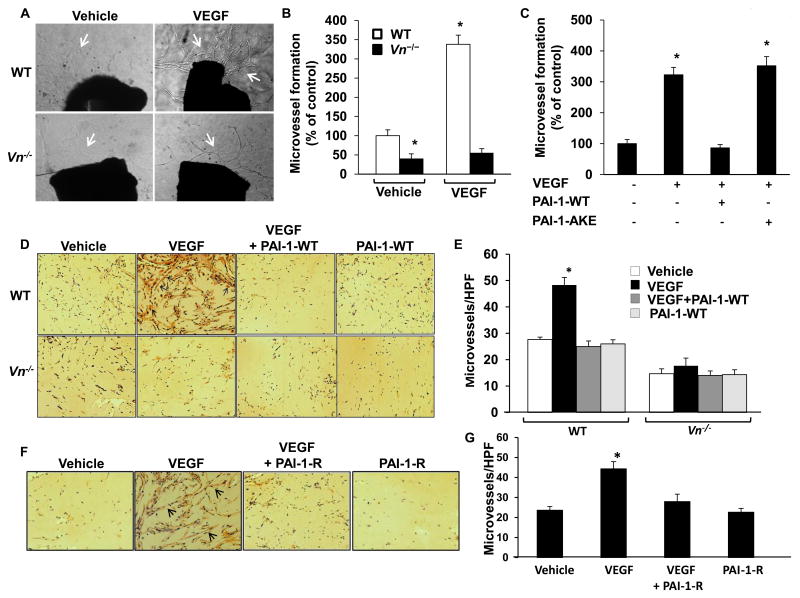Figure 4.
PAI-1 inhibits VEGF-induced angiogenesis. (A) Ex vivo angiogenesis is VN-dependent. Aortic rings from wild-type (WT) and Vn-/- mice were cultured ex vivo for 14 days in media supplemented with VEGF or vehicle control, as shown. Representative images of microvessel sprouts (arrows) from aortic rings are shown. Magnification 40×. (B) Quantitative analysis of microvessel sprouts from aortic rings (n=4/group). Results are expressed as % of control (WT aortic rings treated with vehicle; i.e. 1st bar). *P<0.05 vs. control. (C) PAI-1-WT inhibits VEGF-induced angiogenic sprouting from WT aortic rings, but PAI-1-AKE does not. *P<0.05 vs. control (1st bar; n=3/group). (D) In vivo angiogenesis is VN-dependent and inhibited by PAI-1. Matrigel supplemented with vehicle control, VEGF, VEGF and PAI-1-WT, or PAI-1-WT was injected into subcutaneous tissue of WT mice and Vn-/- mice, as shown. PECAM-1-positive microvessels (arrows) in Matrigel plugs excised 14 days later are shown. Magnification 400×. (E) Quantitative assessment of microvessel formation in Matrigel plugs. *P<0.05 vs. control (Matrigel supplemented with vehicle control injected into WT mice, 1st bar; n=6/group). (F) PAI-1-R inhibits VEGF-induced angiogenesis in WT mice. Representative images of microvessels in Matrigel implants supplemented with vehicle control, VEGF, VEGF and PAI-1-R, or PAI-1-R are shown. Magnification 400×. (G) Quantitative assessment of microvessel formation in Matrigel plugs retrieved from WT mice. *P<0.05 vs. vehicle control (1st bar; n=6/group).

